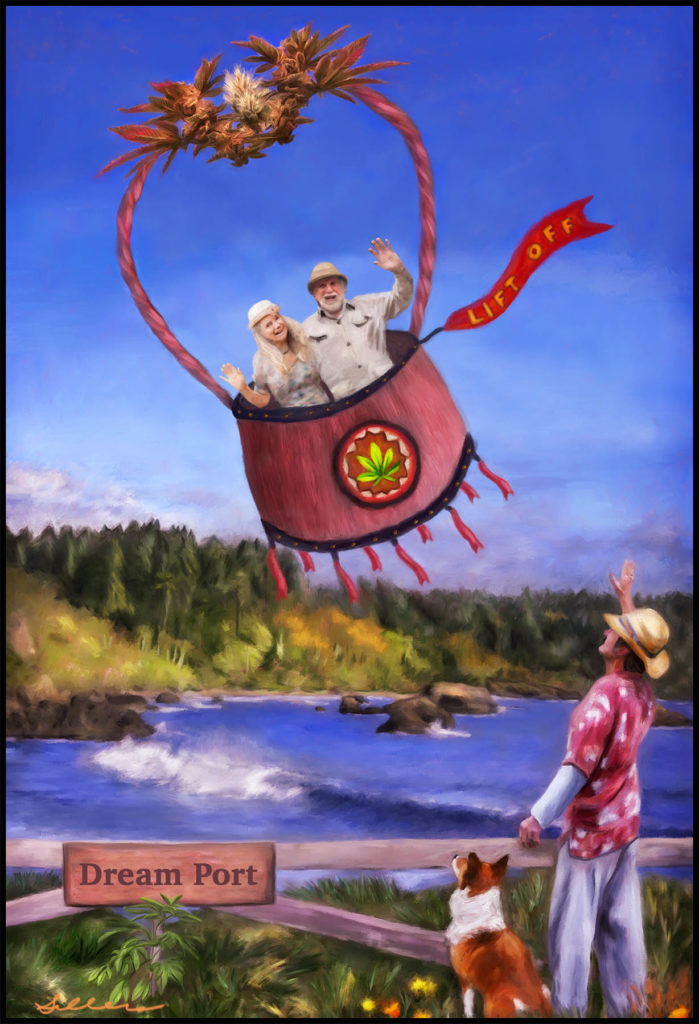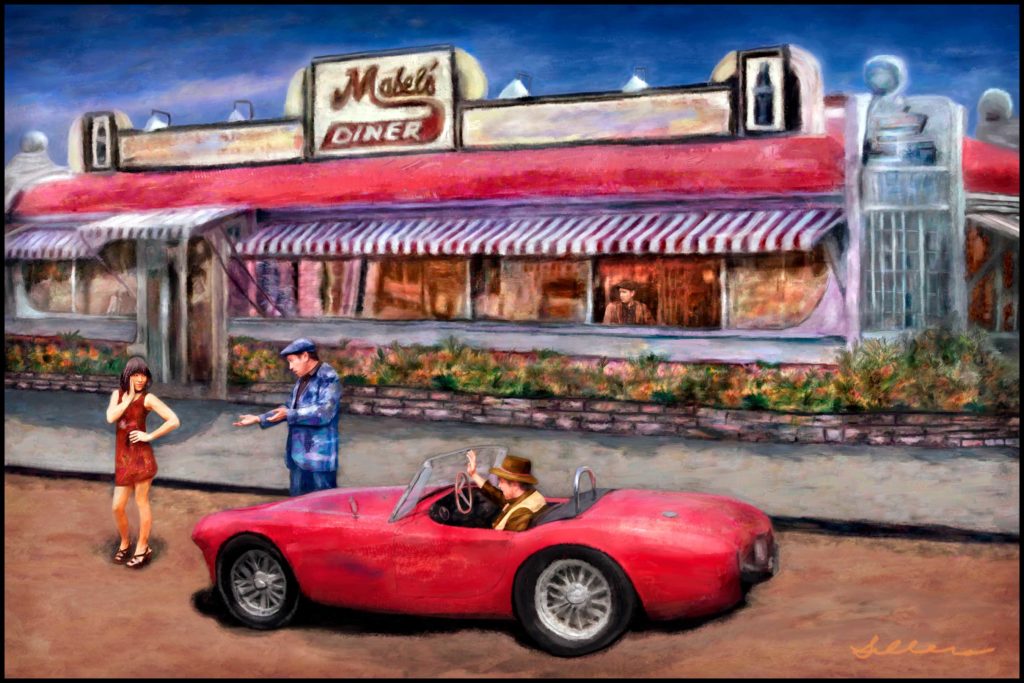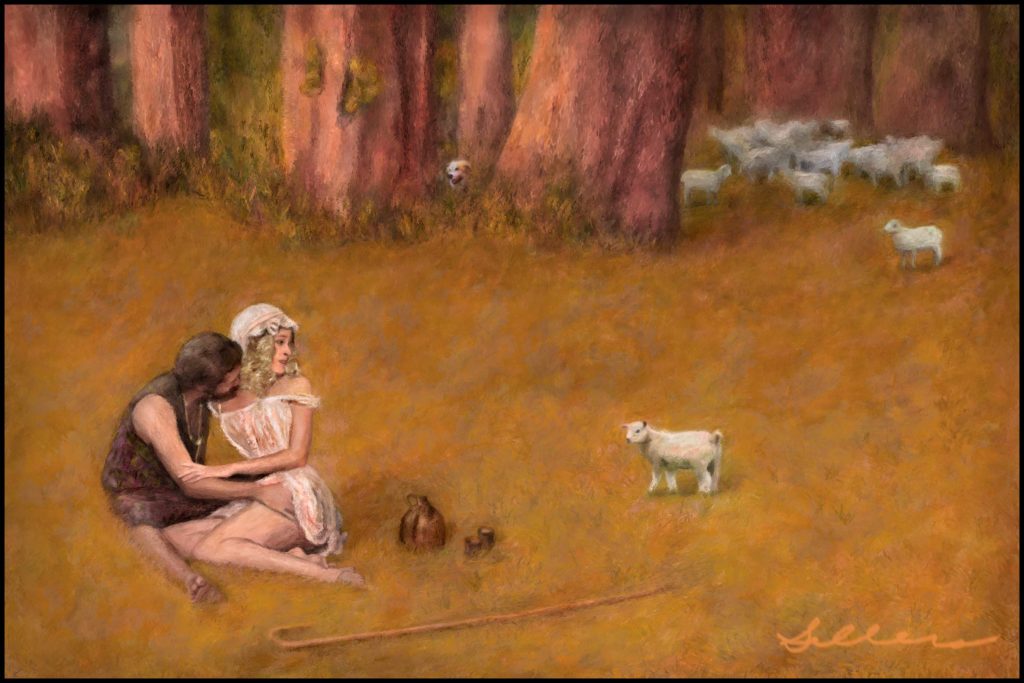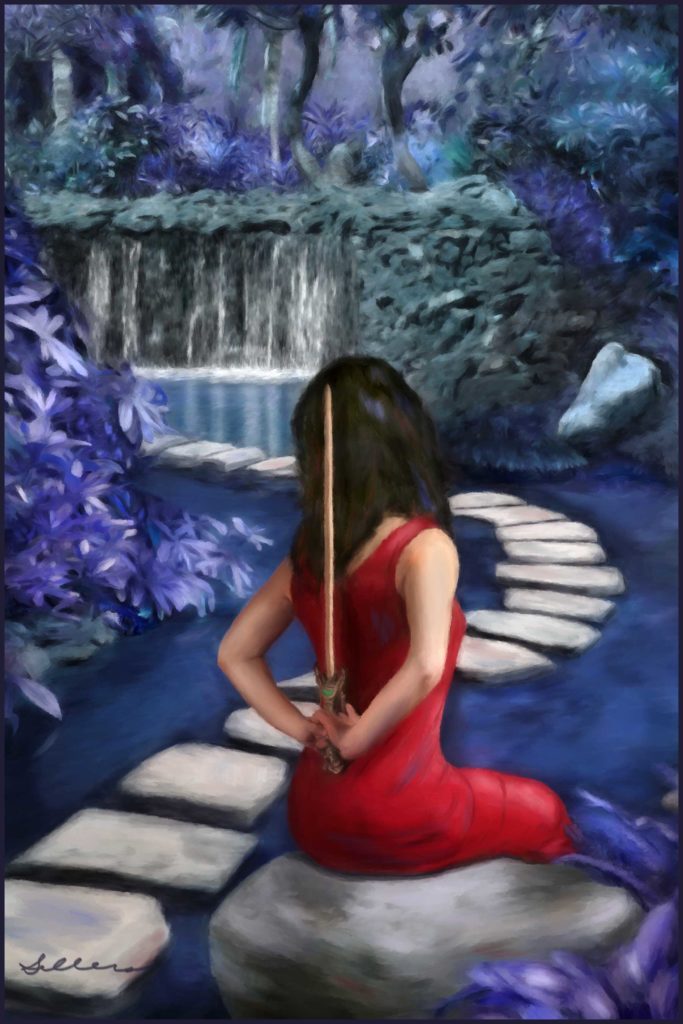
A frequent question we are asked about our art is “how do you both work on the same painting?” There are many aspects and parts to our work from imagining the art image, photographing models, creating montages, and using various techniques and steps in painting and finishing a final artwork. As a couple who works together in one way or another on every art project, we cannot really separate our work from how we function and interact in a positive way with each other in our personal life, sharing our passions and excitement about whatever is our current project. We never try to second guess our audience as we enjoy appealing to a wide range of people with varied interests and backgrounds and love surprises and unexpected reactions, both positive and negative.
Most of our home is part of our studio and we rearrange the art in our living room “gallery” regularly. We look at the art that is in process and imagine any changes either of us would like to see. Thus, our imagination and stories are continually changing and infused with the reflections of each of us. Each painting stimulates many hours of reflection, writing, and sharing. When we find ourselves in conflict, we choose a “director,” the one who had the original idea, who gets to have the final say. In future blogs, we plan to share some of the most exciting outcomes of these moments, including our art, our writing and our direction in our work.
What led us to becoming visual artists?
Creative imagination became an integral part of our personal life from the beginning of our partnership. I lived in Sedona, Arizona and was a mind-body therapist with a humanistic and metaphysical orientation when we got together, and Bob was just finishing up his career in Sacramento where he lead metaphoric psychodrama groups, trained and supervised psychology Interns and had a private practice in which his approach was primarily what he coined Imaginal Therapy. Possibly, because we had worked together in the same field many years before and were both creative in our approaches to our work, we began our chapter together with a fair amount of trust. As individuals who were used to creating outside the norm, changing our direction as “retirement age” folks was not a big stretch for us. We were more than ready to move to a new location and to minimize our previous identities as psychotherapists, trying something entirely new for us.
As adventurous souls, we allowed our imagination to take priority in leading our creative energies in a new direction. Our emphasis on creative story art and the feminine was a natural bridge from our previous background in psychology. For over 20 years we have enjoyed the challenge of this new direction, experimenting with new ideas and techniques, and varied ways to express them. What is most important to us, is that we have fun and enjoy the process as much as we enjoy the outcome. Most recently we have focused on Bob’s novel, editing and self-publishing.
After moving to the creative community of Eureka on the north coast of California in 1995, we began exploring ways of visually and artistically expressing common experiences and dramas through art. We followed our excitement about the visual arts and found our imagination to be strong enough to help us through the technical learning curve. We began with photography and quickly jumped into montages of creative scenes with a message or story to be told. We won early awards and began exhibiting on a regular basis, learning a great deal from the feedback we would receive at our exhibits, what people were attracted to, and what they would buy.
We realized there was much more to learn about doing art and we wanted to express beyond the limitations of photography. We took lots of photos of models and Humboldt backgrounds, capturing various emotions and arranging scenes that would project familiar archetypal stories to viewers. We found that painting our montages provided a greater opportunity for the projections of one’s personal story. We used a lot of trial and error to express our intentions and studied with teachers in the field of digital painting and later, painting with acrylics. We continue to try new ideas and learn new techniques in our work.
Today our work often reflects common themes and stories with which many people can identify. We use universal symbols and themes that can help viewers to create a deeper connection with our art. To further extend our creativity into the field of writing as well as to deepen our own experience of our work, we began writing fictional stories inspired by our art. Bob, who used to direct creative fictional writing with his clients, has found that writing can be fun and a form of release while also leading to deeper insights and understandings. Bob has always been big on humor and fiction as healing tools and avenues to reach the unconscious.
Shared by Donna Sellers


